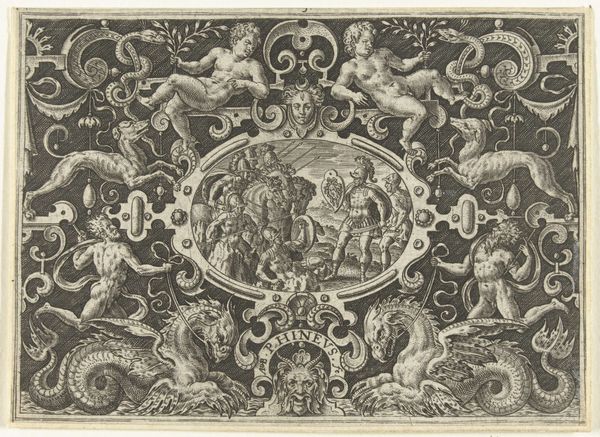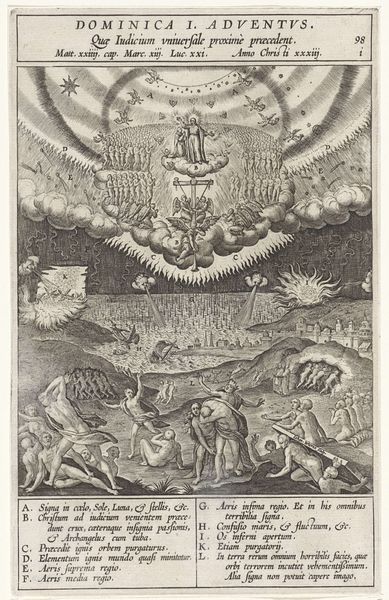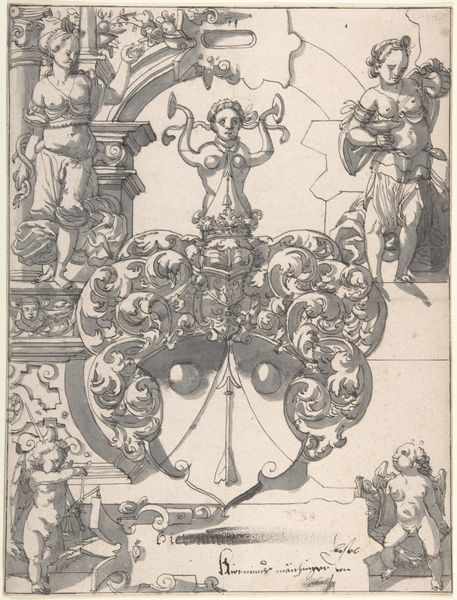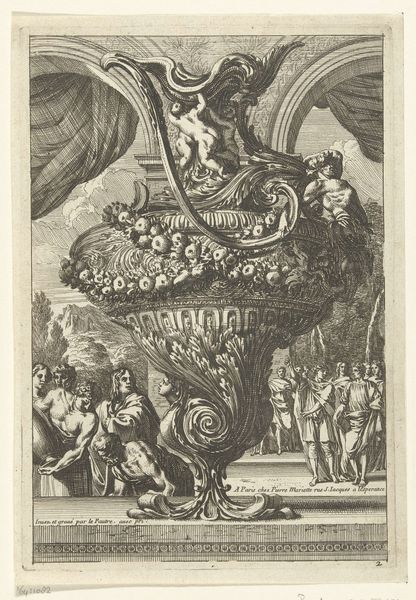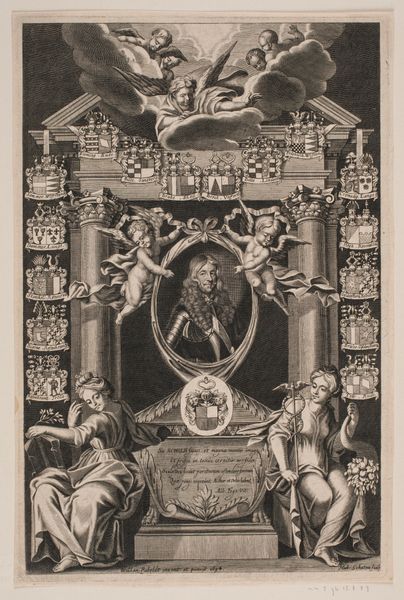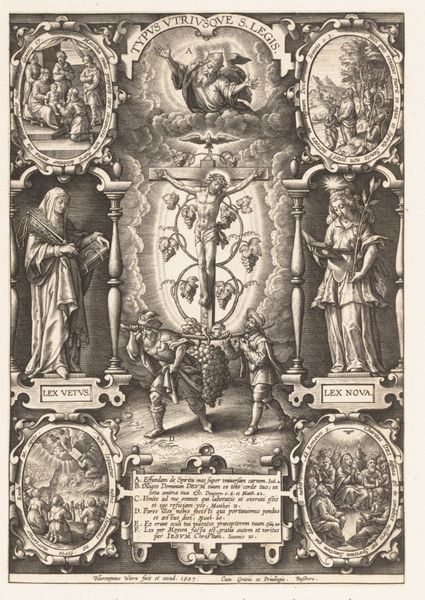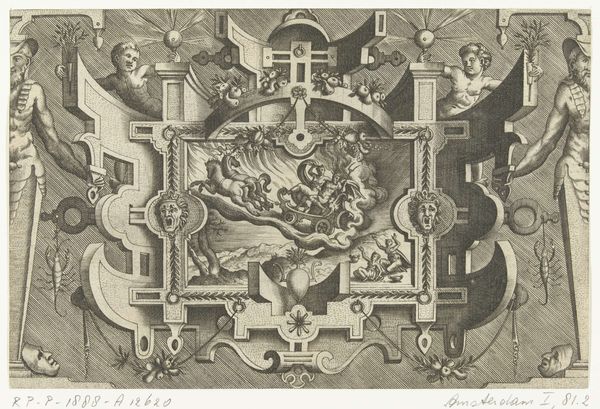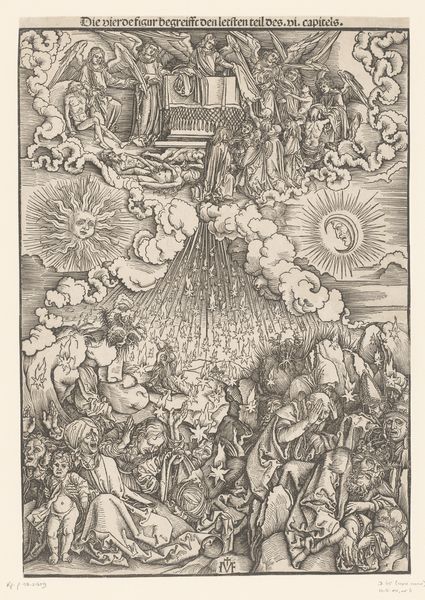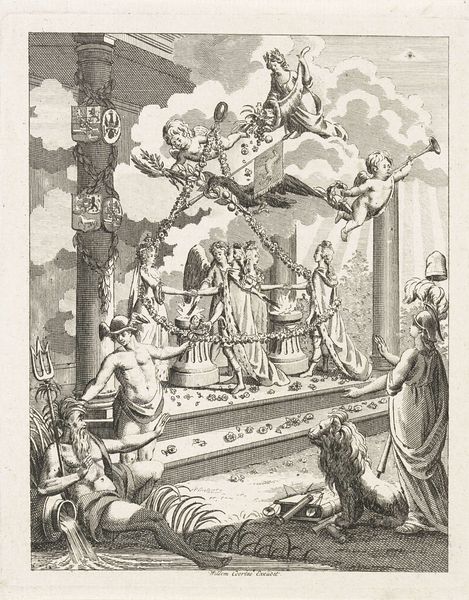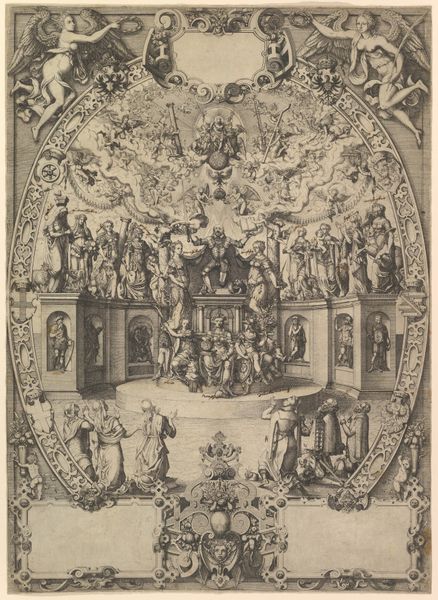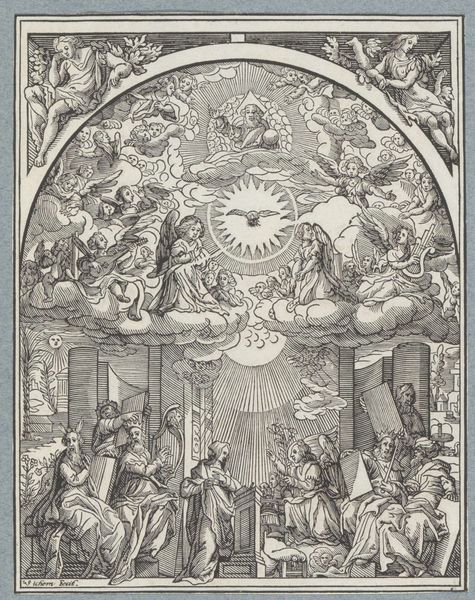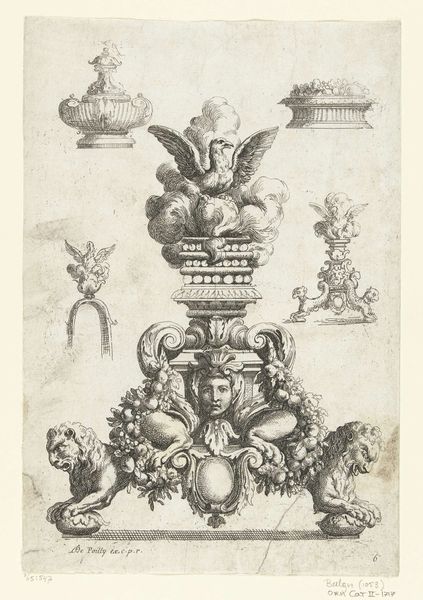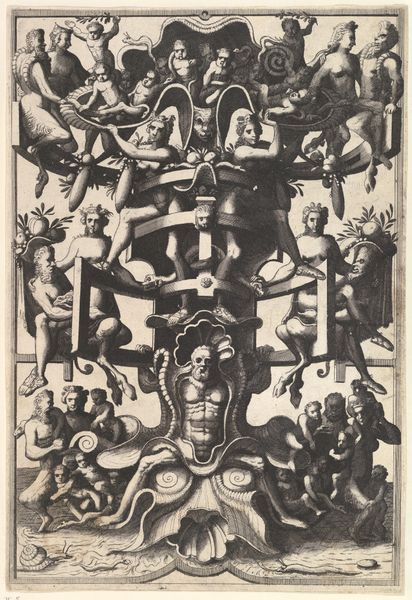
old engraving style
caricature
junji ito style
pen-ink sketch
manga style
comic style
tattoo art
cartoon style
cartoon carciture
pencil art
Dimensions: height 713 mm, width 513 mm
Copyright: Rijks Museum: Open Domain
This allegorical engraving of William III's triumphal chariot was crafted in 1686 by Johann Georg Seiller. At its heart lies a globe borne by figures, alluding to William’s power over the earth, while winged cherubs dance above, and two figures of Roman warriors stand guard on either side. The triumphal chariot motif, echoing ancient Roman processions, reappears throughout history in varied forms. Consider its echoes in Renaissance paintings and Baroque sculptures. The motif, initially symbolizing military victory and imperial power, has metamorphosed over time. It became a celebration of virtue, intellect, or divine grace. Here, the globe, a universal symbol of earthly dominion and the figures bearing it, takes on psychological weight. It is almost as if these children are crushed by the burden of the world. The gesture speaks to an intense emotional state, a profound desire for stability and control, mirroring the anxieties of a world in constant flux. Indeed, the image conveys more than just political might. It captures the viewer on a deep, subconscious level. This cyclical progression highlights how visual symbols resurface, evolve, and are imbued with new meanings.
Comments
No comments
Be the first to comment and join the conversation on the ultimate creative platform.
